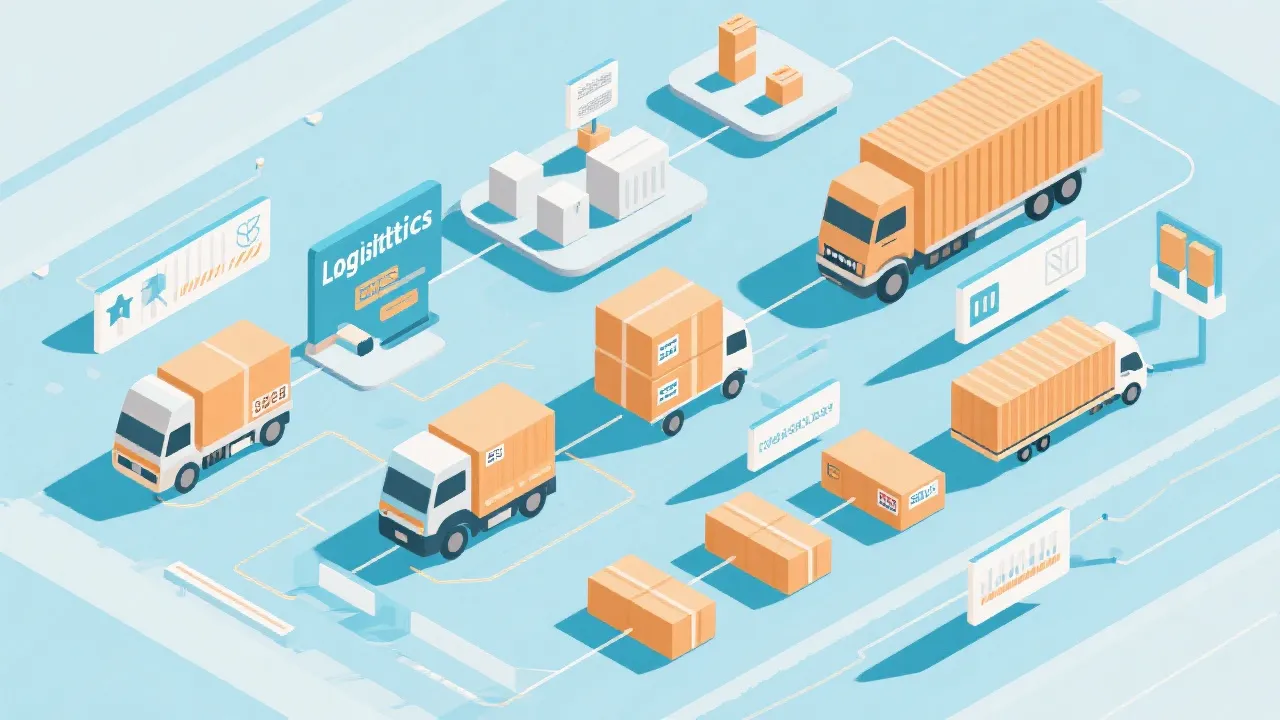Unraveling the Mysteries of GHp 5h SsiBae
GHp 5h SsiBae represents cutting-edge advancements in scientific research, reflecting growth in molecular studies. This terminology captures attention due to its potential transformative impact on various applications in biotechnology and beyond. As more industries explore its capabilities, understanding its fundamentals and potential uses becomes paramount.

An Introduction to GHp 5h SsiBae
In the rapidly evolving world of scientific innovation, GHp 5h SsiBae has emerged as a term gaining significant traction. It encapsulates a range of technologies and methodologies pivotal to advancing research in fields such as biotechnology, molecular research, and complex data analysis. This realm of research holds considerable promise, driving curiosity and investment among industrial stakeholders keen on harnessing its potential. The growth trajectory of GHp 5h SsiBae has led to the establishment of numerous collaborations that span diverse academic disciplines, uniting researchers with a common goal: to understand and manipulate biological systems at unprecedented levels of detail and efficiency.
As we delve deeper into the subject, it becomes increasingly clear that GHp 5h SsiBae represents not merely a collection of tools but a transformative way of thinking about biological research. This approach integrates cutting-edge scientific inquiry with innovative methodologies, allowing scientists to tackle problems that were previously insurmountable. From its inception, GHp 5h SsiBae has embraced a multi-faceted outlook, emphasizing that the convergence of different scientific fields yields the most fruitful discoveries. The ongoing advancements in this discipline serve not only to expand our scientific horizons but also to address the pressing challenges faced by society today, thereby underlining the importance of collaborative and interdisciplinary research.
The Science Behind GHp 5h SsiBae
At its core, GHp 5h SsiBae involves an intricate synthesis of genetic, chemical, and computational methodologies. This multidimensional approach aims to unravel the complexities inherent in biological systems, enabling breakthroughs in genetics, pharmaceuticals, and environmental science. It optimizes the synergy between computational power and biological insights, fostering deeper understanding and innovation. A key element of this science is the integration of high-throughput screening processes, which allow researchers to analyze vast quantities of biological data quickly and accurately. Such techniques facilitate the identification of correlations and patterns that may previously have gone unnoticed.
The application of advanced technologies, such as CRISPR for gene editing, combined with machine learning algorithms for data analysis, exemplifies the progress that GHp 5h SsiBae embodies. This relationship between computational capabilities and biological exploration drives the acceleration of discoveries in various sectors. For instance, the pharmaceutical industry benefits tremendously as researchers can now predict the efficacy of drug candidates more accurately, reducing the overall time and cost associated with drug development. Within the context of environmental science, similar algorithms empower scientists to model ecosystems and predict the impacts of climate change, thus informing conservation strategies.
The GHp 5h SsiBae approach has also been instrumental in pushing the boundaries of synthetic biology. By creating customizable biological systems, researchers can design organisms with specific traits, accelerating the development of sustainable solutions to agricultural and health-related issues. Such scientific advancements have far-reaching implications, including the production of biofuels, biodegradable plastics, and other eco-friendly materials, characterizing a notable shift toward sustainability in science and technology.
Potential Applications
The implications of GHp 5h SsiBae are profound across numerous industries:
- Biotechnology: Advancements in gene sequencing and editing, personalized medicine, and synthetic biology owe much to the precision and efficiency brought about by these new methods. By leveraging GHp 5h SsiBae innovations, biotechnology firms can create highly specific therapeutics tailored to an individual's genetic makeup, enhancing treatment effectiveness and minimizing side effects.
- Agriculture: By enabling precise genetic modifications, GHp 5h SsiBae improves crop yield and resistance, addressing challenges faced by an ever-growing population. Enhanced traits such as drought resistance, pest resistance, and nutritional value could play essential roles in global food security, especially in developing regions where agricultural constraints are most pronounced.
- Environmental Science: It aids in the development of sustainable technologies and strategies for bio-remediation efforts, mitigating pollution and conserving ecosystems. Employing genetically engineered microbes to degrade pollutants represents one of the many innovative environmental applications resulting from GHp 5h SsiBae. The capability to monitor environmental changes through sophisticated data modeling further amplifies our efforts to protect and restore natural habitats.
Case Studies of GHp 5h SsiBae in Action
To illustrate the practical applications of GHp 5h SsiBae, it's essential to highlight notable case studies within various industries. These examples showcase the transformative impact of this research approach and underline its universal relevance across different sectors.
Case Study 1: Precision Medicine through Genomics
In the field of oncology, GHp 5h SsiBae has revolutionized precision medicine. Researchers at various institutions have utilized next-generation sequencing technologies to analyze tumor genomes, enabling clinicians to identify specific mutations responsible for cancer progression. Utilizing tools derived from GHp 5h SsiBae, oncologists can design personalized treatment strategies that target these mutations directly, improving patient outcomes significantly. Trials have shown that patients receive tailored therapies based on their unique genetic profiles, leading to higher response rates compared to traditional one-size-fits-all approaches.
Case Study 2: Biotechnology in Agriculture
In agriculture, a successful application of GHp 5h SsiBae principles can be seen in the development of genetically modified crops. One prominent example is the creation of disease-resistant cassava. By identifying and isolating genes associated with resistance to cassava mosaic virus through genomic sequencing and complex data analysis, researchers engineered a cassava variety poised to withstand viral infections. The impact has been significant, particularly in regions where cassava serves as a staple food source, improving food security and farmer livelihoods.
Case Study 3: Environmental Restoration Efforts
One of the most notable environmental applications of GHp 5h SsiBae principles can be found in the recovery of polluted ecosystems. A collaborative project involving multiple universities and environmental organizations designed engineered microorganisms capable of breaking down oil spills. By employing a combination of synthetic biology and computer modeling, researchers enhanced the biodegradation pathways of these microorganisms, accelerating the clean-up process and minimizing environmental damage. Such initiatives demonstrate the potential of GHp 5h SsiBae to combat pollution and create a sustainable future.
Comparison with Traditional Methods
| Aspect | Traditional Methods | GHp 5h SsiBae |
|---|---|---|
| Complexity Handling | Limited by computational and experimental capabilities. | Integrated approaches enable the deconvolution of complex datasets. |
| Scalability | Often limited by resource investments and technological restraints. | High scalability potential due to automation and efficient data processing. |
| Innovation Rate | Slower due to a segmented approach across disciplines. | Fosters rapid innovation through interdisciplinary collaboration. |
| Data Analysis | Manual and often subjective interpretations leading to potential errors. | Employs artificial intelligence and machine learning for precise, unbiased data interpretations. |
| Resource Utilization | Requires significant time and financial investment with suboptimal output. | Streamlined processes enhance productivity and reduce waste, maximizing resource use. |
Industry Reactions and Collaborations
The rise of GHp 5h SsiBae has sparked enthusiasm across diverse sectors. Industry leaders recognize the potential of this revolutionary framework to catalyze advancements in drug discovery, agricultural productivity, and environmental restoration. This recognition has led to increased funding and partnerships between academic institutions, private enterprises, and governmental organizations. Collaborative initiatives are on the rise as stakeholders aim to harness the interdisciplinary nature of GHp 5h SsiBae to facilitate accelerated research and development.
One testimony from a leading biotechnology firm underscores this collaborative spirit: "The interdisciplinary approach allowed us to bridge gaps between various scientific domains, enhancing our problem-solving capacity multifold. The data-driven insights gained from GHp 5h SsiBae methodologies are pivotal in our current and future innovations." Similarly, supportive governmental policies encouraging investment in biotechnology and R&D are facilitating the establishment of incubators and innovation hubs specializing in GHp 5h SsiBae technologies, further stimulating growth in the industry.
Challenges and Considerations
Despite its potential, the implementation of GHp 5h SsiBae is not without challenges. Aligning regulatory frameworks with rapid technological advancements is crucial. Ethical considerations in genetic manipulations also necessitate transparent and responsible research practices. Stakeholders must remain vigilant in addressing these concerns to ensure societal benefits are maximized.
As the complexity of genetic research escalates, so too does the need for comprehensive ethical guidelines to govern practices, especially concerning human subjects. Stakeholders are called to engage in open dialogues with communities, fostering a shared understanding of the implications and responsibilities tied to GHp 5h SsiBae advancements. Additionally, public apprehension surrounding gene editing technologies, such as CRISPR, necessitates an ongoing commitment to education and transparency. It is essential that researchers, policymakers, and the public collaborate effectively to navigate these intricacies and develop ethical regulatory frameworks that promote trust and acceptance of GHp 5h SsiBae solutions.
The Importance of Education and Training
As GHp 5h SsiBae emerges as a cornerstone of modern science, it is imperative to emphasize the role of education and training in preparing the next generation of researchers. Academic institutions are tasked with evolving their curriculums to incorporate these innovative methodologies, ensuring that students are well-versed in the latest advancements in genetic engineering, data science, and environmental science.
Interdisciplinary programs that bridge biology, chemistry, and computer science not only enhance students' skill sets but also cultivate a mindset geared toward collaborative problem-solving. Training opportunities, such as internships and research assistantships, allow aspiring scientists to gain hands-on experience with GHp 5h SsiBae methodologies, fostering practical expertise. Additionally, investing in workshops and seminars that feature industry leaders and experts in GHp 5h SsiBae can provide invaluable insights and networking opportunities for students and early-career researchers. By prioritizing education and training in GHp 5h SsiBae, we lay the groundwork for ongoing innovation and progress in the scientific community.
FAQs
Q: What does GHp 5h SsiBae stand for?
A: The term encapsulates a contemporary approach integrating genetic, chemical, and computational research methodologies. It signifies advancements in handling complex biological datasets and dependencies.
Q: How does GHp 5h SsiBae enhance research processes?
A: By merging technology with biology, it increases the accuracy and speed of molecular analyses, paving the way for quicker innovation cycles and product development.
Q: Is GHp 5h SsiBae applicable outside of scientific research?
A: Yes, its principles are increasingly being applied in fields like environmental management and agriculture to improve efficiency and sustainability. For example, its algorithms can optimize resource allocation in agriculture, ensuring that inputs like water and fertilizers are used judiciously to maximize output.
Q: What are some other applications of GHp 5h SsiBae?
A: Beyond the previously mentioned fields, GHp 5h SsiBae principles can be found in areas such as food tech, where novel methods are being developed to create lab-grown meats and cultured dairy products. This revolutionary approach could potentially reshape our food systems, addressing ethical concerns while meeting global nutritional demands.
Conclusion
GHp 5h SsiBae stands as a beacon of progress within the scientific community, offering a plethora of opportunities for innovation across numerous sectors. As researchers continue to explore its capabilities, this potent blend of technology and biological sciences promises to reshape industries, catalyzing a new era of discovery and development. Its implications reach beyond academic research, influencing policies, economic growth, and ultimately, the fabric of society itself.
The successful integration of GHp 5h SsiBae methodologies into existing frameworks requires a collective effort from the global scientific community, industry leaders, and policymakers to navigate the challenges ahead. By fostering an environment of collaboration, transparency, and education, we can harness the full potential of GHp 5h SsiBae technologies, propelling humanity into a future characterized by groundbreaking advancements that benefit society globally.
As we step forward into this future, it is essential to remain committed to ethical considerations, fostering a culture of responsibility within scientific exploration. The impact of GHp 5h SsiBae has the potential to resonate for generations, unlocking pathways to improved health, sustainable agriculture, and a cleaner environment. Therefore, the journey of GHp 5h SsiBae is not just a scientific endeavor but a shared responsibility that must involve all stakeholders in the quest for progress.









